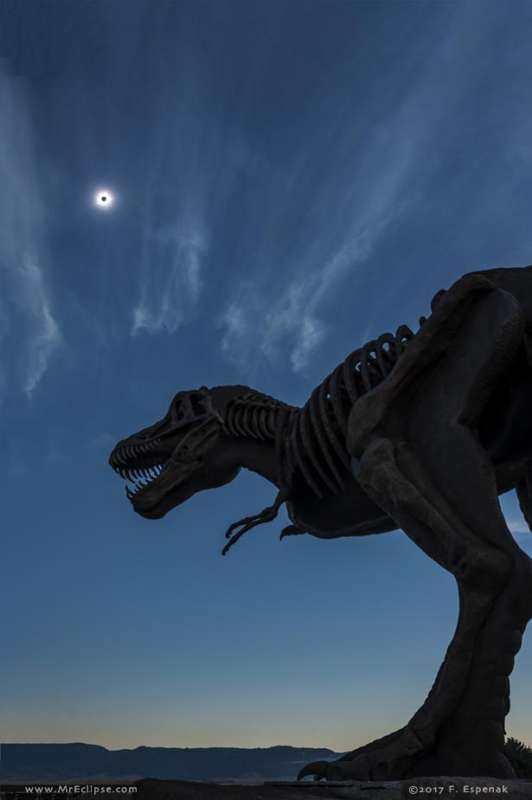Credit & Copyright: Fred Espenak
(MrEclipse.com)
Explanation:
We live in an era where
total
solar eclipses are possible because at times
the apparent size of the Moon can just cover the disk of the Sun.
But the Moon is slowly moving away from planet Earth.
Its distance is
measured
to
increase
about 1.5 inches (3.8 centimeters) per year due to tidal friction.
So there will come a time, about
600 million years from
now, when the Moon is far enough away that the lunar disk will
be too small to ever completely cover the Sun.
Then, at best only annular eclipses, a ring of fire surrounding
the silhouetted disk of the too small Moon, will be seen from
the surface of our fair planet.
Of course the Moon was slightly closer and loomed a little larger
100 million years ago.
So during the age of the dinosaurs there were more frequent
total eclipses of the Sun.
In front of the
Tate
Geological Museum at Casper College in Wyoming,
this dinosaur statue posed with a
modern total eclipse, though.
An automated camera was placed under him to shoot his portrait
during the Great American Eclipse of August 21.
1999 2000 2001 2002 2003 2004 2005 2006 2007 2008 2009 2010 2011 2012 2013 2014 2015 2016 2017 2018 2019 2020 2021 2022 2023 2024 2025 |
Январь Февраль Март Апрель Май Июнь Июль Август Сентябрь Октябрь Ноябрь Декабрь |
NASA Web Site Statements, Warnings, and Disclaimers
NASA Official: Jay Norris. Specific rights apply.
A service of: LHEA at NASA / GSFC
& Michigan Tech. U.
|
Публикации с ключевыми словами:
total solar eclipse - полное солнечное затмение
Публикации со словами: total solar eclipse - полное солнечное затмение | |
См. также:
Все публикации на ту же тему >> | |
